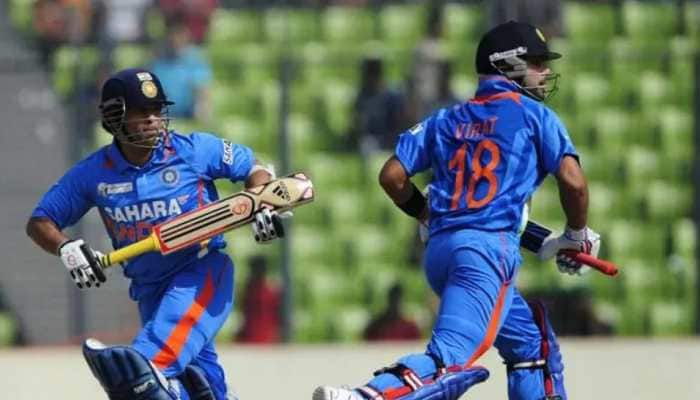Cassini's grand finale: NASA's probe begins 'ring-grazing' orbits to study Saturn's rings
During the first two orbits, the spacecraft will pass directly through an extremely faint ring produced by tiny meteors striking Saturn's two small moons Janus and Epimetheus.
Trending Photos
) Image credit: NASA/JPL-Caltech
Image credit: NASA/JPL-Caltech New Delhi: NASA's Cassini mission is drawing near its end because the spacecraft is running low on fuel.
On Wednesday, November 30, the spacecraft has begun its thrilling ride of "ring-grazing"orbits, slaso called the 'Grand Finale, bringing the probe the closest it's been to Saturn's majestic rings.
According to NASA, over the next five months (between November 30th and April 22nd), Cassini will circle high over and under the poles of Saturn every seven days for a total of 20 times. They called this phase of the mission 'Ring-Grazing Orbits', which is the first step in the probe's "grand finale" investigation of the gas giant planet.
"We're calling this phase of the mission Cassini's Ring-Grazing Orbits, because we'll be skimming past the outer edge of the rings," Cassini project scientist at NASA's Jet Propulsion Laboratory (JPL) Linda Spilker said in a statement.
"In addition, we have two instruments that can sample particles and gases as we cross the ring-plane, so in a sense Cassini is also 'grazing' on the rings."
During the first two orbits, the spacecraft will pass directly through an extremely faint ring produced by tiny meteors striking Saturn's two small moons Janus and Epimetheus.
Then, ring crossings in March and April will send the spacecraft through the dusty outer reaches of the F ring, which marks the outer boundary of the planet's main ring system.
Cassini's ring-grazing orbits also offer "unprecedented opportunities to observe the menagerie of small moons", including best-ever looks at the moons Pandora, Atlas, Pan and Daphnis, said NASA.
However, these orbits are merely a prelude to the spacecraft's "Grand Finale phase" that will begin in April 2017, when Cassini is scheduled to fly through the 2,350 km gap between Saturn and its rings.
Finally, the long-lived spacecraft will make a mission-ending plunge into the planet's atmosphere on September 15, 2017.
Launched in 1997, Cassini has been touring the Saturn system since arriving there in 2004.
Cassini also carried a probe called Huygens, which parachuted to the surface of Saturn’s largest moon, Titan, in January 2005 and returned spectacular results.
During its journey, Cassini has made numerous dramatic discoveries, including a global ocean within Enceladus and liquid methane seas on Titan.
(With IANS inputs)
Stay informed on all the latest news, real-time breaking news updates, and follow all the important headlines in india news and world News on Zee News.
Live Tv







)
)
)
)
)
)
)
)
)
)
